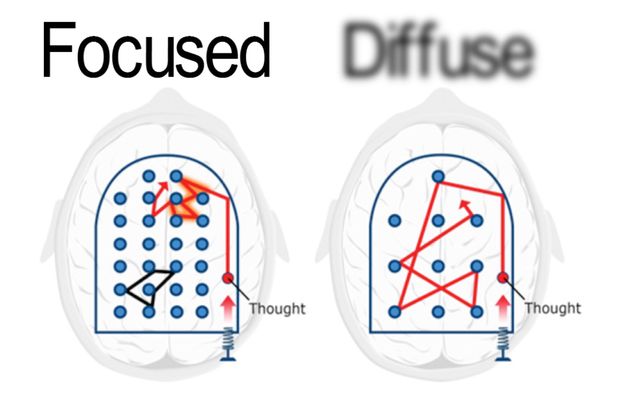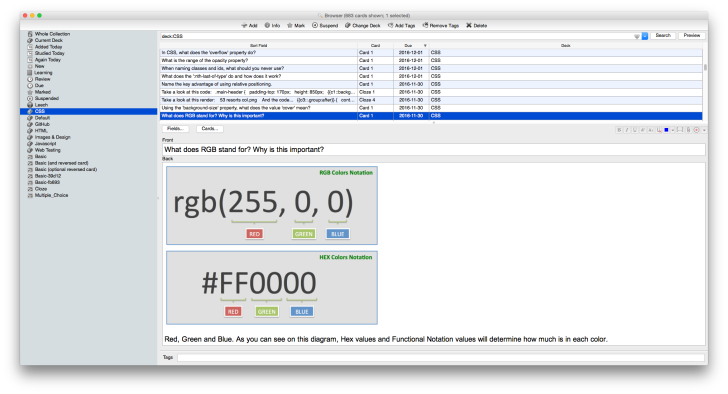Reading time: 8 minutes

What training montages did for Rocky is what this method did for my code – and it can do it for you too!
Introduction
Learning to code has been one of the greatest decisions that I have ever made in my life. It has been incredibly challenging, but like L’Oreal it has been worth it!
But having a teaching career as well as a family and other commitments, have made it difficult for me to be able to dedicate the huge blocks of time that I would love to and I usually only have one hour a day to play with.
As I wrote before, I really struggled at the beginning as I felt that I wasn’t retaining any information. I thought that I had to continually go back over the same resources again and again because I just kept forgetting.
But being a student of Personal Development taught me that there is always a better way so I stumbled upon the Study, Do, Model cycle.
That gave me great results but I know that I could push it even further. Then I stumbled upon a marvellous book called “A Mind For Numbers: How To Excel At Maths And Science” by Dr Barbara Oakley.
Focused Versus Diffuse Learning

Dr Oakley’s book (which I am going to do a book review on very soon) was mind blowing. The book itself is a companion piece to an online course called “Learning How to Learn” which is available on Coursera. Dr Oakley has researched extensively on how human beings best learn & designed the course around her findings.
The book rests on the theme that when we are learning any new subject, we are actually switching between two modes: focused learning and diffuse learning. ‘Focused learning’ is where our conscious mind is fully focused on the problem at hand i.e. working out a maths question on the exam paper. This mode is what most of us know through formal education.
But what is equally as important is what she called ‘diffuse learning’ – this is where the mind is left to wonder and not focus on the problem at all. Diffuse learning is a more relaxed mode where the mind subconsciously works on the problem in the background.
Question: how many times have you had a difficult coding problem that really drive you crazy and you took a short break to cool off – only to it to find when you returned, the answer magically staring in your face? No, Harry Potter didn’t zap your grey matter – what happened was, when you took your focus off the issue, your subconscious mind took over and was ‘freer’ to make connections with all the different knowledge centres in your brain. Freaky huh? The book argues that we learn optimally when we balance our time between focused & diffuse learning.
The One Hour Study Method
Prior to reading the book, my coding practice merely consisted of watching videos & doing a couple of code challenges and I was getting very frustrated. But based on the suggestions in the book I changed my whole structure to the following:
20 minutes – Completing flashcards to test myself on what I learnt in a prior sessions
30 minutes – Following video/book instruction in 5-8 minute blocks then immediately applying what I am learning
10 minutes – reading popular blogs/watching videos about the ‘tech’ industry in general
TOTAL = 1 HOUR
1) 20 minutes of Flashcards.
Dr Oakley felt that ‘cramming’ (intense study on a subject for a short period of time) produced poor results. The problem is NOT remembering the information. Our subconscious minds are fantastic at remembering most of the information that comes our way. The real problem is retrieval – the ability to recall the information at will.
The best analogy I can think of, is that your mind is like a massive warehouse: all the info that you absorb, gets stored deep in the warehouse but there is no labelling system so when the stuff comes in, it’s chucked in a random box & filed away in a messy heap and you can only stumble on it by accident.

Our minds are not as efficient as we would like to think…
Re-reading your notes won’t help either. How many times have you read a page in a book & you had to read it 5 times to understand the main points? That’s because your brain goes into ‘passive’ mode as it doesn’t have to work hard to do anything with the info – it’s all in your face!
Asking questions like “what is the difference between CSS & HTML?” forces your brain to switch to ‘active’ mode where it has to search for the information & strengthens the neural pathways so it makes the info easier to retrieve. Asking questions is like, not only sorting, labelling & filing the stuff properly in your mind but figuring out the shortest path to get the stuff when you need it. The best way to do this is via flashcards.
When I first started, I manually wrote out paper flashcards. But as my knowledge base grew, it became harder to manage & know what Flashcards I had to review, when next to review them etc so I switched over to Anki – an electronic flashcard system that did it all for me.

Once I create a flashcard, Anki automates when I will need to test myself on it again and gives me a lot of stats on how long it took for me to answer the question, difficulty etc…
This mean I was deliberately practicing what I had learnt & my recall ability shot up dramatically. Flashcards are the ‘what’ of your learning.
2) 30 minutes of watching instructional videos in 5-8 minute blocks then applying what I had just learnt.
The book talks about the concept of ‘chunking’ which means putting pieces of information together which are bound by meaning. Remember when we spoke of building our neural pathways to make it easier to retrieve information? ‘Chunking’ takes these individual pathways and weaves together the form and information superhighway. For example, when you order food at a fancy restaurant, you are doing a number of unrelated things:
- Reading the menu- you need to know the language and the context
- Calculating the cost – maths, percentages, decimal points
- Food – know/imagine what the different flavours of food
These things involve very different skills but your brain formed a chunk called ‘order food in a fancy restaurant’ and it allows you not only to do those things but effortlessly & at the same time.

If you can order food in a restaurant them you’re a genius…
Chunking is the ‘when’ of learning – it’s no good learning millions of different pieces of information but not knowing when to apply them.
This means that jumping from one topic to another quickly will not give your brain the time to connect all the information together. You must organise your material in similar groupings. This is why I took Teamtreehouse’s TechDegree, which did all the hard work for me. The TechDegree is an online bootcamp that gives you all the essentials skills to become hired as Front-End Developer. It has an extensive syllabus that builds on itself & after each section, gives you code challenges & projects to complete based on what you learnt. This method allows my brain to build a solid foundation of knowledge that i can use at will.
3) Watch a 10 minute talk/video about the tech industry or read a popular blog
Research has shown that after 45 minutes of concentration, our attention span starts to dwindle so I stop coding and I try to watch or read something about the tech industry. I do this, so I can come out of ‘focused mode’ and go into ‘diffuse mode’. This provides my ‘why’ of learning. Looking at the trends and new discoveries in the industry, allows me to see “the big picture” and gives me clarity on what direction my learning is going in. There is no point in learning the skills, if you don’t know where they will fit into the marketplace. These ideas go into my unconscious mind and it acts as a guide of what to learn next.

You need to see far so that you can go far.
Of course I am not perfect and I may skim down on one part or the other. It’s not easy, as this method forces you to slowdown rather than whizz through 100 videos.
But this method has transformed my coding ability. I feel more confident, retain more information & start to see more connections between different areas making me learn faster. I have been using this method for 3 months, and what I have seen is a quantum leap in my progress.
If this seems a bit too crazy for you, I would say start small. Do you 20 minutes of flashcards or some form of testing yourself and then do 40 minutes of your regular stuff. Being proactive by testing yourself will you yield significant results, I promise you!
If you need a hand, please reach out and I will explain more about my system.
Please let me know what you think in the comments below.
See you next Thursday!
Karlwebdev


[…] When I started to learn about Front-End Development, I really struggled to get my head around the strange concepts: variables, selectors, concatenation, attributes and refactoring were attacking my brain like Bruce Lee in a fury. I just couldn’t get my head around it and it made me miserable. But as I went further along, I realised that a website had its own framework. […]
LikeLike